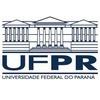Explore all the information on
Poultry management
Poultry management usually refers to the husbandry practices or production techniques that help to maximize the efficiency of production. Sound management practices are very essential to optimize production. Scientific poultry management aims at maximizing returns with minimum investment. A carefully controlled environment that avoids crowding, chilling, overheating, or frightening is almost universal in poultry farming. Cannibalism, which expresses itself as toe picking, feather picking, and tail picking, is controlled by debeaking at one day of age and by other management practices. The feeding, watering, egg gathering, and cleaning operations are highly mechanized. Birds are usually housed in wire cages with two or three animals per cage, depending on the species and breed, and three or four tiers of cages superposed to save space. Cages for egg-laying birds have been found to increase production, lower mortality, reduce cannibalism, lower feeding requirements, reduce diseases and parasites, improve culling, and reduce both space and labour requirements.
Darrin Karcher (Purdue University) discussed the minimum stocking density in this system to achieve sufficient production and welfare conditions -including feather coverage-, during an interview at the Multi-State Poultry Feeding and Nutrition Conference and Silvateam's Technical Symposium in Indianapolis, USA....
Comments : 0
Recommendations: 1
INTRODUCTION The White Leghorn chickens are the most productive white egg layer and are used in commercial egg production all over the world. Leghorn breed is single comb and completely covered in dense white feathers and will lay about 250-300 white eggs annually. Leghornhavebeen a preferred for commercial egg production due to smaller size and over the top egg production. The White Leghorn hen is not considered as broody hen, so most of these eggs would have to be...
Comments : 3
Recommendations: 2
Half of the birds reared worldwide are estimated to suffer from the consequences of heat stress during the summer period. The first visible sign is an increase in the water: feed ratio, however recent research has also shown that excessively hot conditions have an impact on the gut structure and its permeability. Reduced feed consumption and decreased intestinal integrity and function result in the decreased energy intake, animal discomfort and the reduced...
Comments : 5
Recommendations: 0
Brian Jordan (University of Georgia) talks about the advances made in the research of this method, during IPPE 2019 in Atlanta, USA....
Comments : 7
Recommendations: 3
By Adam Speir for CAES News
College of Agricultural & Environmental Sciences
University of Georgia
Barn fires have long been known as a potential hazard of storing hay, but a recent barn fire in Madison County, Georgia, revealed another hazard — poultry litter.
It’s never good to get a call from the fire department, but at the end of January, the local fire station called the University of Georgia...
Comments : 0
Recommendations: 0
KEY POINTS Birds ‘reproductive cycle is controlled by changes in day length called as Photoperiod. Birds perceive this photoperiod in two ways: a) Through retinal of the eye to visual cortex and pituitary gland b) Through harderian gland (UVA specific light) which triggers reproductive system Birds are not “stimulated” by the entire period of light, but rather by two important parts of this period. Birds are...
Comments : 22
Recommendations: 9


Effects of DON and antidote on pro-inflammatory mRNA expression of broiler
Suggested link
By Rhea Hebert
NC State Prestage Department of Poultry Science
If you aren’t an active farmer, you might think spring has just finally sprung – but for North Carolina farmers, spring chores start before the scarves come off. For poultry farmers, one chore is spreading poultry litter as fertilizer. To help the farmers get it just right, NC State Extension lends a hand with calibration demos.
While many PDPS faculty have Extension...
Comments : 0
Recommendations: 0
1. Introduction All aspects in life need knowledge. Knowledge can be gotten from many sources. Before getting the knowledge, information must be read in proper way. Data owner can present their data in many forms. Sometimes, it can be difficult to extract information if data were presented in wrong ways. This thing can result in wrong knowledge and lead the business to the wrong path. Absolutely, business owners don’t want this thing happens. One critical sector that needs...
Comments : 2
Recommendations: 0
.jpg&w=3840&q=75)

Evaluation of methionine sources on performance and carcass traits of broilers
Suggested link
The poultry industry continues to rapidly expand throughout many regions of the world. World production of chicken and eggs is twice the level of only two decades ago. The genetic potential of the broiler, breeder, and egg-type layer has changed dramatically, resulting in a higher producing but more fragile chicken. Thus, the commercial chicken of today requires improved management practices. In today’s highly sophisticated industry, data collection practices implemented by a company...
Comments : 1
Recommendations: 1
Dr. Girish Channarayapatna, Director, Nutrition and Technical Sales at Evonik Animal Nutrition, explains this New digital approach presented at VIV Asia 2019, which allow producers to use sensors and software going beyond just gathering data in order to get a better understanding of the condition of their flocks, helping increase the performance or improve uniformity....
Comments : 0
Recommendations: 11
.jpg&w=3840&q=75)

40 Years of Success in China with Hy-Line (Mandarin-language video)
Suggested link
Human resources and people programs is one of the most important, yet complex, functions in today's poultry and egg industry. Regardless of how sophisticated equipment and machines may be, the success of a company ultimately depends upon its people. People are essential to manage and maintain the complex systems of today, and people must make vital day-to-day decisions.
The Hilton Sandestin Beach Golf Resort & Spa will be the venue for this seminar on April 15-17 in Destin,...
Comments : 0
Recommendations: 0
Casey Ritz (University of Georgia) discussed the importance of effective litter management, during IPPE 2019 in Atlanta, USA....
Comments : 0
Recommendations: 1
Yi Liang (University of Arkansas) talked about temperature, humidity and wind variations during transportation, as well as the effect of density, during IPPE 2019 in Atlanta, USA....
Comments : 0
Recommendations: 2
Brian Kiepper (University of Georgia) explained the misconceptions regarding this issue and how it should be analyzed in order to take the right measures, during IPPE 2019 in Atlanta, USA....
Comments : 0
Recommendations: 0
Kenneth Anderson (NC State University) explained his findings regarding time requirements in terms of labor and other factors involved, during IPPE 2019 in Atlanta, USA....
Comments : 0
Recommendations: 0
INTRODUCTION Litter is a mixture of excreta, litter substrate (e.g., wood shavings, rice hulls, peanut shells), as well as soil, feathers, and other components. It is used to cover broiler house floors to absorb excreta and provide a comfortable surface for the birds (Kelley et al., 1996). Broiler litter from the first flock is typically reused for several consecutive flocks (up to 14 times) (Roll et al., 2011) for economic reasons, and also to reduce the organic load of...
Comments : 0
Recommendations: 0
Economical organic material like rice husk, sawdust, pine shaving, wood shavings, pea nuts hulls, straw, coconut husks & other dry-absorbent are used as bedding material / litter in poultry operation. Though materials are selected keeping in mind the economics & easy availability which are regional based, the cost of above mentioned materials for broiler chicken bedding has risen considerably over the last few...
Comments : 15
Recommendations: 0
The development of antibacterial resistance is an issue of global concern. Not only human beings have experienced it, but it has also taken relevance in the veterinary sector. The Food and Agriculture Organization (FAO) mentioned in different reports that the antibacterial agents play a key role in the treatment of animal diseases. Unfortunately, antibacterial agents are often used improperly to treat and prevent diseases in...
Comments : 0
Recommendations: 1
Six university researchers will present findings from recently-completed research projects funded by the U.S. Poultry & Egg Association (USPOULTRY) and its Foundation as part of the ever-popular TECHTalks at the 2019 International Production & Processing Expo (IPPE). The research presentations will be given in the TECHTalks Theater in C-Hall, Booth C9123, from 9:30 a.m. – 12 p.m. on Thursday, Feb. 14. All of the TECHTalks presentations are free to registered IPPE...
Comments : 0
Recommendations: 0
Rendering is not a new process, as animal proteins and fats have been rendered for centuries. However, new innovations are shaping the future of the rendering industry. These innovations and other topics will be discussed at the International Rendering Symposium: Innovation in Rendering program, held Feb. 14-15, 2019, in conjunction with the International Production & Processing Expo (IPPE) in Atlanta, Ga.
Sponsored by the National Renderers Association and U.S. Poultry & Egg...
Comments : 0
Recommendations: 0













.jpg&w=3840&q=75)



.jpg&w=3840&q=75)













